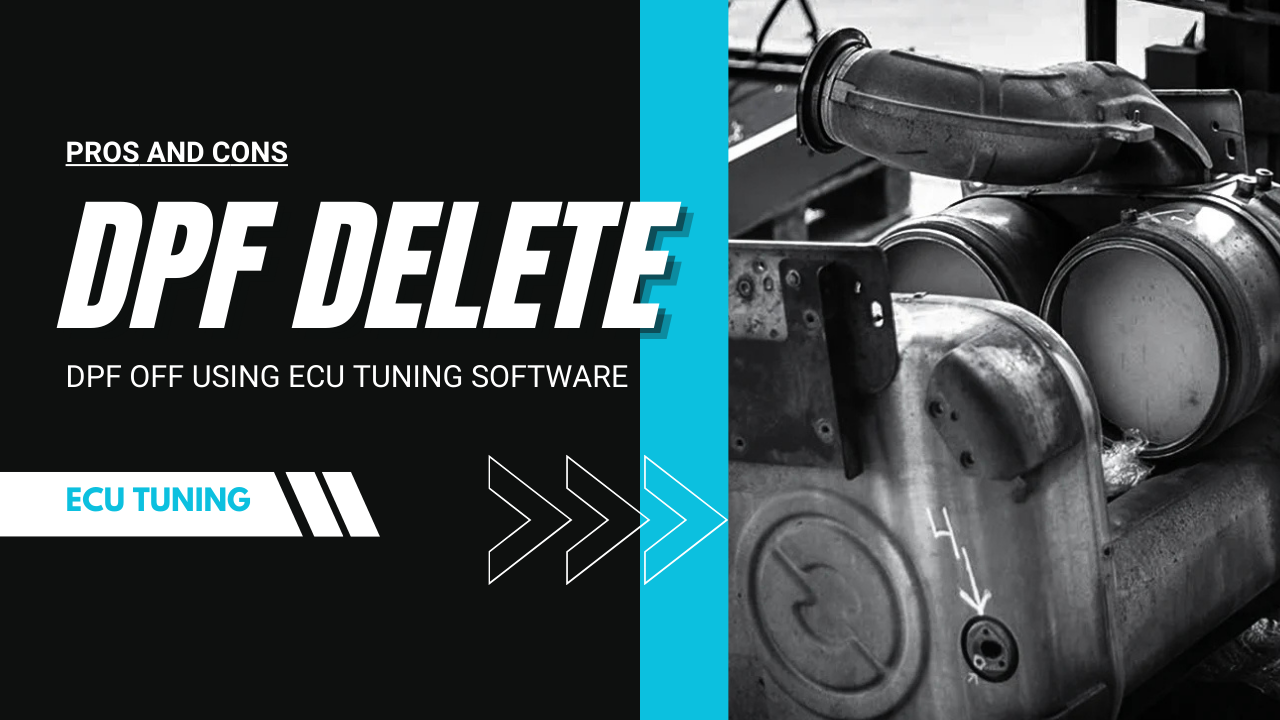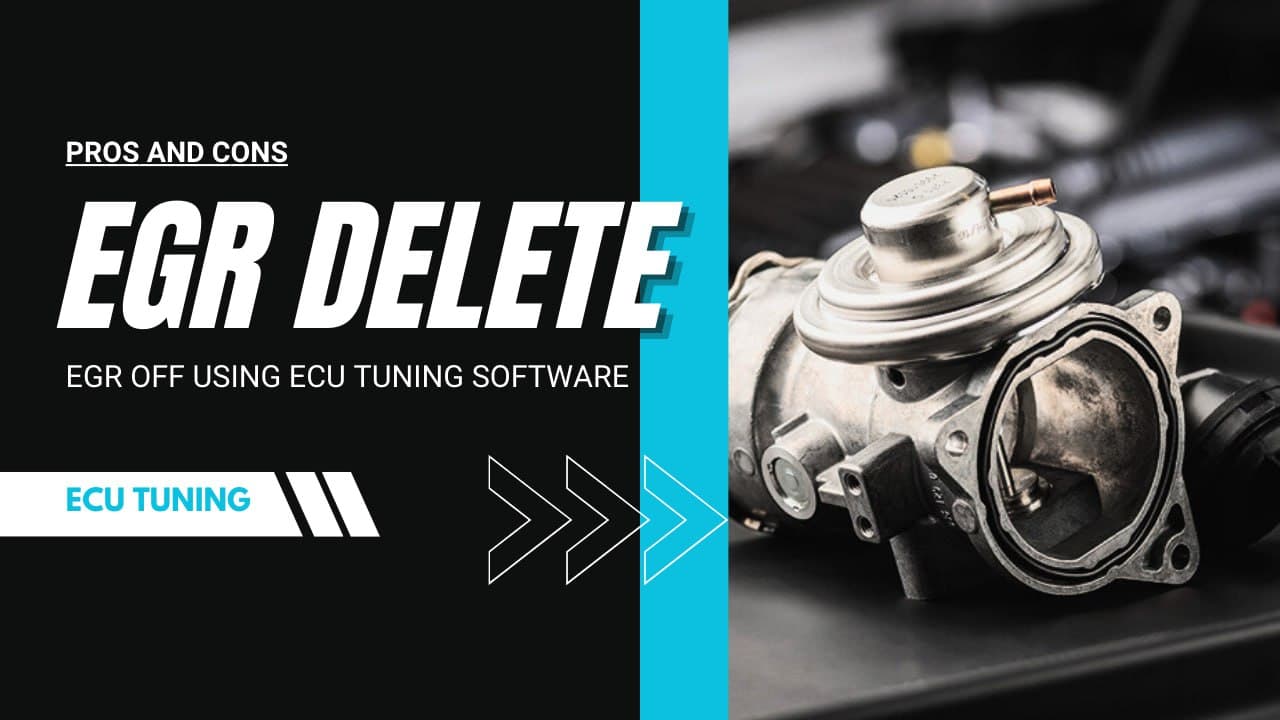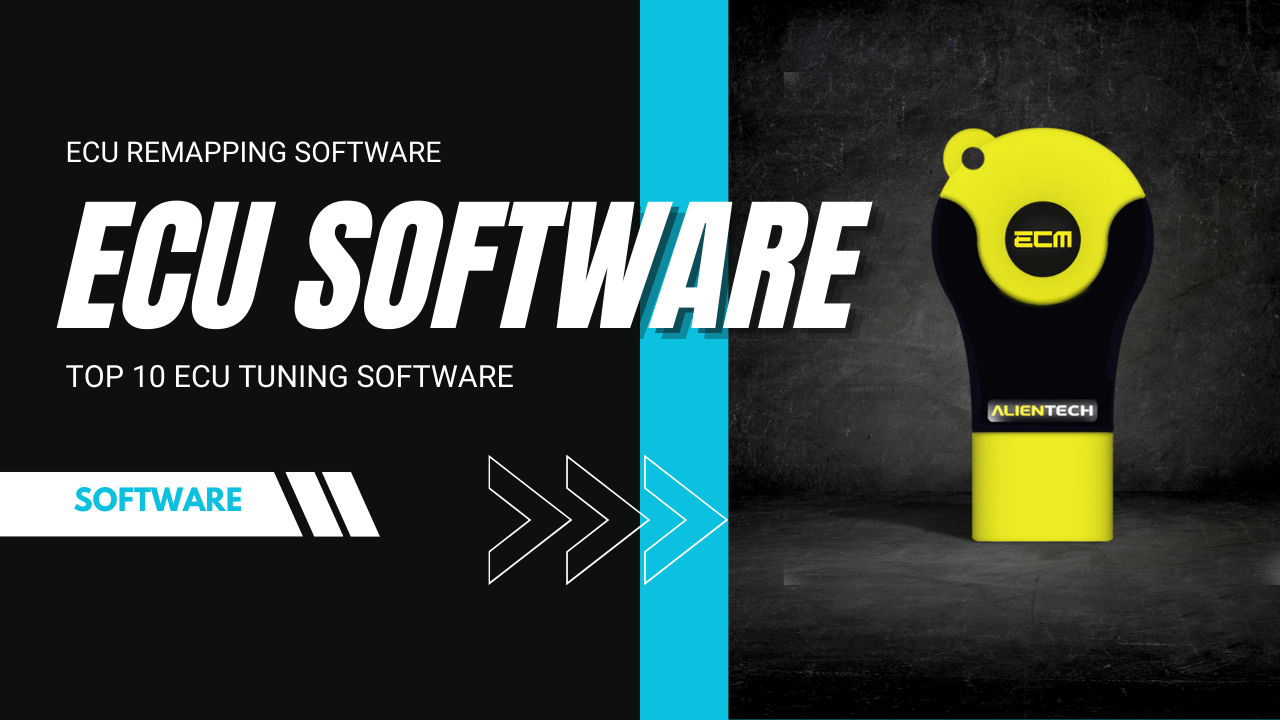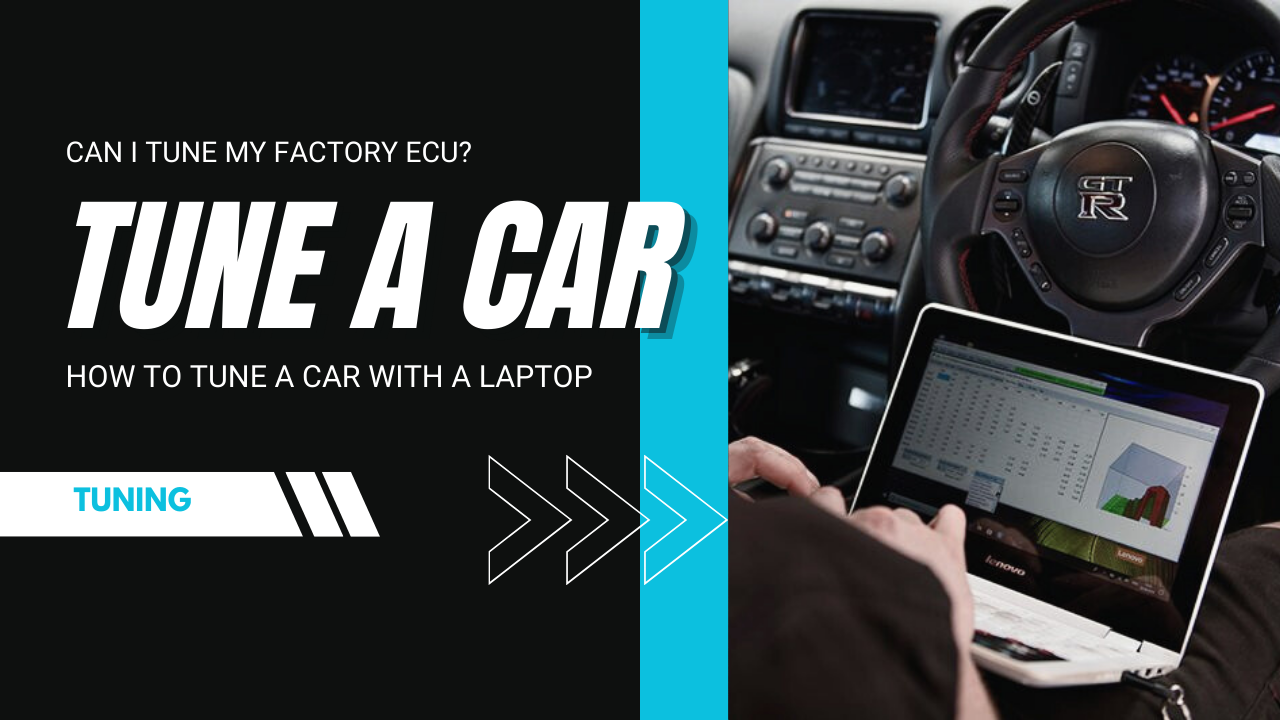
DPF Delete: All You Need to Know About DPF Removal software
A full DPF delete in practice involves physically removing the Diesel Particulate Filter, followed by software deletion.
Although it is possible to perform this process purely through software, a complete DPF delete, one that does not cause problems in the future, must include both physical and software removal.
The DPF delete is usually performed to increase vehicle efficiency, avoid costly DPF repairs, and for performance tuning purposes (Stage 2 and Stage 3 tuning).
However, it can also bring drawbacks such as voiding the warranty, increased emissions, and consequently violating environmental regulations.
In the following sections of this article, we will discuss all these aspects as well as the tools and software required for performing a DPF delete.
What is DPF and Why is it Done?
A DPF delete is a two-part process:
1. Physical Removal: The DPF housing is opened, and its ceramic honeycomb filter element is removed. Alternatively, the entire DPF unit can be replaced with a DPF delete pipe, which is also called an exhaust downpipe.
2. ECU Remapping (Software Removal): The Engine Control Unit (ECU) is reprogrammed to disable DPF-related functions such as automatic and forced regeneration cycles, smoke limitation controls, and sensor monitoring. This "DPF off" software modification prevents the ECU from displaying error or fault codes (like P2002 DTC), check engine light, or entering "limp mode."
Diesel Particulate Filter (DPF) Lifetime:
Studies on Diesel Particulate Filters (DPFs) show that these filters trap both soot and non-combustible ash from fuel residues and engine oil additives. While soot is burned off during regeneration, ash gradually accumulates, increasing exhaust backpressure and eventually reducing filter efficiency. After around 200,000 kilometers, ash can make up to 80% of the trapped material, indicating that the DPF needs professional cleaning or replacement.
After the DPF reaches the end of its service life, replacement can be very expensive.
Because of the high cost of a new filter, many vehicle owners choose to remove the DPF entirely instead of replacing it.
Therefore, one of the main reasons for DPF removal is the combination of limited lifetime and high replacement cost.
What we will focus on is the second step of the DPF delete process, which is a necessary step for a complete and proper DPF removal.
What is DPF Delete?
Diesel Particulate Filter, or DPF in short, is a system developed to capture soot or other particulate matter produced during combustion in order to reduce emissions in diesel engines. As exhaust gases pass through the DPF, it traps soot particles in its filter structure.
Removing the DPF is done physically, by breaking the honeycomb-structured ceramic inside the housing or replacing it with a Downpipe or Decat. However, after the physical removal, remapping the ECU is necessary. The vehicle’s ECU is reprogrammed to disable the DPF monitoring and regeneration cycles. This ensures that the ECU doesn’t recognize the absence of the DPF and avoids Diagnostic Trouble Codes (DTC), turning the check engine light or entering limp mode. This process is done by remapping the ECU using certain tools and software, which we will discuss later on.
The Pros and Cons of DPF Delete:
DPF Delete is definitely an effective solution, but it’s best to know its advantages and disadvantages before doing anything.
DPF Delete Pros:
1. Improved Engine Performance:
Removing the DPF lowers exhaust backpressure, letting the engine “breathe” more freely. Reduced backpressure improves exhaust gas scavenging and turbine efficiency, which can boost power (HP) and torque by about 2–5%, depending on engine calibration and load. On the other hand, it can cause to increased particulate emissions and forfeits compliance with emission standards.
2. Better Fuel Efficiency:
By deleting the DPF, the back pressure is reduced, and the fuel normally required for the regeneration mode will also be eliminated from the total fuel consumption. This can lead to a 1–5% reduction in fuel usage.
3. Lower Maintenance Costs:
DPF filters have a limited life and replacing them can be quite costly ,typically ranging from about $1,000 to $6,000, depending on the vehicle and brand. In some cases, replacement costs can exceed $2,000. Removing the DPF eliminates concerns about future clogging as well as the need for expensive professional cleaning or replacement.
4. Enhanced Longevity for Certain Components:
By DPF removal, several related components can experience reduced strain and longer service life. For example, turbocharger, EGR valve, and exhaust sensors often operate under less heat and backpressure once the DPF is removed. This reduction in thermal and mechanical stress and strain can help prevent premature wear or failure, particularly in vehicles that frequently work on idle, or drive short distances where regeneration cycles often fail to complete properly.
5. Suitable for Older Vehicles:
DPF removal is an optimal choice for older vehicles, those whose warranties have expired or that, for any reason, are not covered by warranty.
For this category of vehicles, deleting the DPF is certainly a better option than replacing it, as it prevents the costs associated with replacement, repair, and spare parts.
Off-road vehicles, fleets, as well as cargo and commercial trucks, are the best candidates for software calibration aimed at DPF deletion.
DPF Delete Cons:
1. Legal restrictions in some countries/cities:
In certain countries, cities, or states, particularly in Canada, Australia, and some cities and states in Europe or the United States, DPF off is illegal, and various fines or penalties have been established for it.
2. Increased Harmful Emissions:
Removing the Diesel Particulate Filter (DPF) increases particulate matter (PM) emissions and can also raise NOx and HC levels depending on engine calibration. Laboratory and real world studies consistently show that DPF deletion causes PM emissions to increase by 10–100 times compared to a properly functioning system.
3. Voiding Warranty:
Any modifications and tuning to the engine, including the ECU, ACM or DPF system, may void the Powertrain (Engine and Gearbox) warranty. In the case of problem, the owner will be responsible for all repair costs, and the manufacturer will have no obligations.
4. Potential for DTCs or Dash lights:
Modern diesel engines are a synchronized system of precisely functioning sensors and monitoring units. An improper DPF removal, or removal of any other component, can lead to DTCs, activation of limp mode, or dashboard warning lights. In addition, software-related work always carries the possibility of errors (by humans or programmers), incompatibilities, and similar issues. Of course, many of these problems can be minimized when the work is handled by a reputable and experienced individual, team, or workshop.
5. Impact on Resale Value:
In many cases, vehicles with deleted DPFs attract less interest from potential buyers, since everyday users and consumers usually have little knowledge about how these systems work or what their removal entails. Hearing about such modifications often causes panic; they assume trouble is ahead! For this reason, after a DPF delete (by any method), the potential market for such vehicles is often limited to commercial, off-road, or similar applications.
Is It Illegal to Remove the DPF?
Although removing the DPF may make your vehicle sound louder or even slightly more powerful, it will also lead to the emission of significantly more soot. Moreover, in a considerable number of cities and countries, DPF deletion is illegal. In these regions, a DPF delete is effectively equivalent to removing the entire emissions-control system, which as mentioned earlier, can result in heavy fines for vehicle owners or drivers.
Are There Legal Ways to Benefit from DPF Removal Performance?
High-flow DPF systems produced by brands such as Akrapovič, Milltek, and Supersprint are among the alternatives to older DPF systems. These are designed to improve exhaust flow while still maintaining filtration. From a technical standpoint, high-flow DPF systems reduce back pressure and improve turbo response, although if the soot filtration efficiency decreases, they will still violate emissions regulations! For that reason, this solution is also prohibited in many countries.
In addition, high-pressure DPF systems are extremely expensive; another drawback.
Another issue is that in many parts of the world, their use is restricted, and legal authorization is required to install them in your vehicle.
How DPF Deletes Are Detected (At a Glance):
OBD Scan: Diagnostic scans can reveal altered or non-standard ECU software, missing DPF regeneration data, or fault codes disabled to hide deletion.
Visual Check: Inspectors look for missing pressure/temperature sensors, empty or welded DPF canisters, or non-factory exhaust welds.
Smoke/ Opacity Test: Engines without a DPF emit excessive soot and typically fail emissions opacity tests immediately.
Tailpipe Probe: A probe inserted into the tailpipe can confirm the absence of the ceramic DPF substrate.
How To Delete DPF From The ECU?
After the physical removal of the DPF, this is exactly the point where you need a specialist to carefully and accurately complete the process on the software side.
Step-by-Step DPF Software Removal Process:
1.Read the Original ECU File:
Using a well-known ECU tuning/programmer tool like KESS3, AutoTuner, FLEX or etc, connect to the vehicle’s OBD port or directly to the ECU (bench or boot mode) to read and the stock map file.
2. Identify and Modify DPF Maps:
- Open the file in a hex editor software, like EVC WinOLS. Here, the tuner must locate and modify several key maps:
- DPF Switch / Configuration Maps: These are flags that tell the ECU whether a DPF is present. They must be turned "off."
- Regeneration Tables: All maps related to the “DPF regeneration process” must be modified to prevent the ECU from trying to initiate the regeneration cycle.
- Error Code (DTC) Table: The specific Diagnostic Trouble Codes (DTCs) associated with the DPF (e.g., P2002, P2463) must be deleted from the ECU’s fault memory.
3. Adjust Related Engine Parameters:
The smoke and lambda (Air-Fuel Ratio) tables may also need adjustment to allow for richer fueling without triggering limp mode.
4. Write the Modified File to the ECU:
After all modifications are complete, the new file is written back onto the ECU using the same ECU programmer tool.
Problems After DPF removal
A problem that occurs after removing the DPF is that the ECU detects the missing DPF, which results in the check engine light being turned on, the regeneration cycles completely malfunctioning, and sometimes entering limp mode. After deleting DPF, errors like “Diesel Particulate Filter Efficiency Below Threshold” or “DPF System Malfunction” with codes like P2002, P2003,P2452, P2463, P2464, P2465, P1457, and P1491 appear in the diagnosis tools. Therefore, the solution is to remap the ECU and modify needed maps to resolve this issue.
Common DPF Errors & Fault Codes :
Here are some of the most common DPF-related fault codes that may appear. It is important to understand that DPF systems often generate multiple error codes, and after the physical removal of the DPF, you may continue to encounter various fault codes associated with the system.
Here are 10 common DPF error codes and their causes:
1. P2002: Diesel Particulate Filter Performance Problem – Blockage
- Cause: Clogged DPF due to soot or ash buildup from insufficient regeneration.
2. P2452: DPF Regeneration Pressure – Signal Too Low
- Cause: Faulty pressure sensor, exhaust leaks, or incomplete regeneration cycle.
3. P2453: DPF Regeneration Pressure – Signal Too High
- Cause: Malfunctioning pressure sensor or DPF clog causing high pressure.
4. P2402: DPF Pressure Sensor Circuit Performance
- Cause: Faulty sensor, wiring issues, or sensor circuit failure.
5. P2471: DPF Temperature Sensor Circuit Performance
- Cause: Faulty temperature sensor, wiring issues, or sensor contamination.
6. P2463: DPF Temperature Sensor – High Voltage
- Cause: Short circuit or faulty temperature sensor.
7. P2403: DPF Pressure Sensor Circuit Low Voltage
- Cause: Low voltage readings from sensor due to wiring faults.
8. P2413: DPF Regeneration Control – Faulty Regeneration
- Cause: Incomplete regeneration due to faulty sensors or exhaust leaks.
9. P2456: DPF Regeneration Pressure Sensor – Range/Performance
- Cause: Faulty regeneration pressure sensor or improper regeneration process.
10. P2401: DPF Leak Detection – System Fault
- Cause: Exhaust leaks or malfunctioning leak detection system.
To resolve this, we highly recommend utilizing Schiller tuning file service. With this service, you can upload your ECU file, along with the existing error codes. Within 30 minutes, we will provide a modified ECU file with the DPF and its associated fault codes fully deleted. This ensures that your vehicle runs smoothly without triggering any related error warnings or performance issues. Our solution is fast, efficient, and tailored to ensure optimal performance after the removal of the DPF system.
What is the Best DPF Delete Software?
Without a doubt, the best software for DPF deletion is WinOLS, because unlike its competitors, this software provides access to all the bits within the ECU.
To delete the DPF using WinOLS, you need a deep understanding of how it works as well as sufficient hands-on experience with it. Once equipped with that knowledge, you can identify all the tables related to the DPF system and apply the necessary changes to each one of them.
DPF Delete software/ DPF Delete tools
In order to do any modification on the ECU software, we need tools to read and write the ECU file. There is a major pool of programmers that can be used, such as KESS3, AutoTuner, Dimsport Trasdata, FLEX, and many more. After we get a read file from the ECU, we remap the file and then write it on the ECU.
DPF Off Service
A lot of people are looking for DPF off, AdBlue off, and EGR off training courses, but unfortunately the methods differ for every ECU and calibration. All ECUs have different algorithms, maps, and placements inside the ECU dump file. For example, an fuel table is almost always the same in all ECUs in terms of algorithm and the 2D and 3D view, but for things like DPF, EGR, and AdBlue, there is no similarity in different ECUs. Therefore, using the original Damos and A2L files of that particular ECU is necessary in order to access and modify desired maps efficiently.
Our technicians at Schiller tuning have over a decade of experience in working with WinOLS; having years of knowledge in the field is why we are able to find DPF and smoke limitation maps inside the software in order to remap cars, either stock or tuned.
You can use our ECU tuning services, such as EGR, DPF, or AdBlue/SCR OFF; in order to do that, you need to have your car’s original ECU file. If you’re a tuner, you can read the file using one of the programmers we introduced, or if you’re the car owner, you can reach out to the nearest dealership in your area to read the original ECU file and then upload it to our Tuning File Service. After a short while, our experts will send you the remapped file.
Does DPF delete increase horsepower (HP)?
Removing the DPF (Diesel Particulate Filter) can lead to an increase in performance by improving exhaust flow. With the filter out of the system, exhaust gases can flow more freely, which reduces engine backpressure and improves overall efficiency. As a result, the engine is able to perform more effectively, often resulting in noticeable gains in horsepower. The DPF delete is considered one of the simplest and most effective methods for boosting engine performance.
DPF OFF for Stage Tuning
Before we get into the stages of diesel tuning, we need to have an understanding about diesel AFR. The air-to-fuel ratio (AFR) in modern diesel engines is extremely lean compared to petrol ones; this is to prevent soot while the DPF is present. If the fuel is set richer, it clogs the DPF and creates backpressure.
As you can see in the Lambda Table above, the AFR is 18:1, which is lean in full throttle areas.
In the first stage of tuning or an eco remap, there is no need to remove the DPF, since we don’t modify smoke limitation tables nor make the fuel richer. As a result, there is no increase of soot, so there is no risk of DPF getting clogged, and there is no increase of backpressure in the exhaust system.
In stage2 & stage3 diesel tuning you should remove DPF because to reach more torque and power, we need to make the fuel richer. You can see this time we made the lambda richer than before and have an AFR of 15:1; this is where we get smoke limited with the DPF being present. With the DPF removed, the engine can breathe more freely, and the ECU remapping can focus on aggressive fuel injection, turbo boost increases, and optimized air-fuel ratios to extract maximum power and torque. The disadvantage is the increase of soot particles and smoke in the air, which is bad for health and the environment.
If the DPF is not deleted and the AFR is rich, the EGT increases, and it creates a lot of backpressure; this leads to engine damage
Does DPF delete change sound?
After removing the DPF, the car's sound was a bit louder, but not overwhelming, and there was no noticeable resonance. With just the DPF delete, the sound is very close to stock, with a subtle exhaust tone. If both the DPF and CAT are deleted, the sound becomes comparable to a full downpipe-back exhaust, slightly quieter, but still has a strong tone when you accelerate.
How much is a DPF Delete and Remap?
DPF removal and remap cost ,The DPF removal process consists of two stages: physical and software. To physically remove and clean the ceramic honeycomb of the DPF, it’s recommended to visit the nearest service center to get a price estimate. However, after the physical removal, the DPF must also be deleted from the vehicle's ECU software, a process known as the DPF solution. For this software modification, you can utilize our file tuning service, which costs $75.
Conclusion
The practice of disabling a Diesel Particulate Filter (DPF) through ECU remapping is a complex issue that involves balancing performance, cost savings, and compliance with environmental regulations. While DPF Off solutions can offer tangible benefits such as improved fuel economy, increased power, and reduced maintenance costs, they also raise significant environmental and legal concerns. Removing a DPF physically or through ECU remapping may void warranties, lead to potential mechanical issues, and contribute to harmful emissions, which is why it is prohibited in many regions.
For enthusiasts pursuing higher performance or stage tuning, ECU remapping can offer precise control to optimize engine output while mitigating the limitations imposed by a DPF. However, the process demands specialized expertise, tools, and software to ensure reliability and adherence to local laws. As such, working with experienced professionals is crucial for achieving the desired results safely and responsibly. Ultimately, DPF-off solutions should be approached with careful consideration of the legal and ethical implications, as well as the long-term effects on both the vehicle and the environment.
Contact us: Contact us easily via WhatsApp at +45 55 22 92 98
Email: [email protected]
We’re here to help!
If you found this helpful, please consider sharing it with others!
FAQs:
DPF delete without removing DPF
A DPF delete without removing the DPF is typically done by modifying the vehicle's ECU (engine control unit) to disable or bypass the DPF system. This allows the engine to function as if the DPF is no longer present, preventing the vehicle from going into limp mode or triggering warning lights.
Does a DPF delete increase horsepower (HP)?
Yes, “DPF Delete” can increase horsepower. By solving the restriction issue in the exhaust system, the engine can expel exhaust gases more efficiently, typically resulting in performance gains.
How much does a DPF delete/ DPF off cost?
The total cost varies but generally falls into two parts. The physical removal can cost between $200 - $600 at a workshop. The software remap or "DPF solution" from a service like Schiller Tuning costs around $75.
Does a DPF delete cause a louder exhaust?
Yes, because the DPF system not only eliminates whistle noises but also reduces overall engine sound, as it causes exhaust gases, especially during acceleration, to move more freely.
What problems can occur after a DPF off/ DPF delete?
Numerous potential problems! An incorrect, incomplete, or poorly executed DPF delete can trigger the check-engine light, generate error codes, and even send the vehicle into limp mode. Excessive black smoke may also appear as another symptom of a bad DPF delete. In the worst-case scenario, it can even lead to engine damage.
Can you perform a DPF off without physically removing the DPF?
Yes, it is possible to do this, but note that if you delete the DPF only through software, it may cause some issues. Each time the filter becomes clogged again, you might need to reflash/rewrite the stock file and perform a forced regeneration, which can be a time-consuming process.
Related Articles:

EGR Delete/EGR OFF Service/Everything You Should Know About EGR Removal
Learn about EGR removal service : you will learn about EGR delete software and how to Delete EGR from ECU Using Remap

Top 10 ECU Tuning Software
"Discover the top 10 best ECU Remapping software options in our comprehensive comparison, featuring popular software like WinOLS, ECM Titanium, and more.

How To Tune a Car with a Laptop
Learn how to remap your car using a laptop and the right tools. Follow this step-by-step guide to ECU remapping for improved performance.
Comments
No comments yet. Be the first to comment!